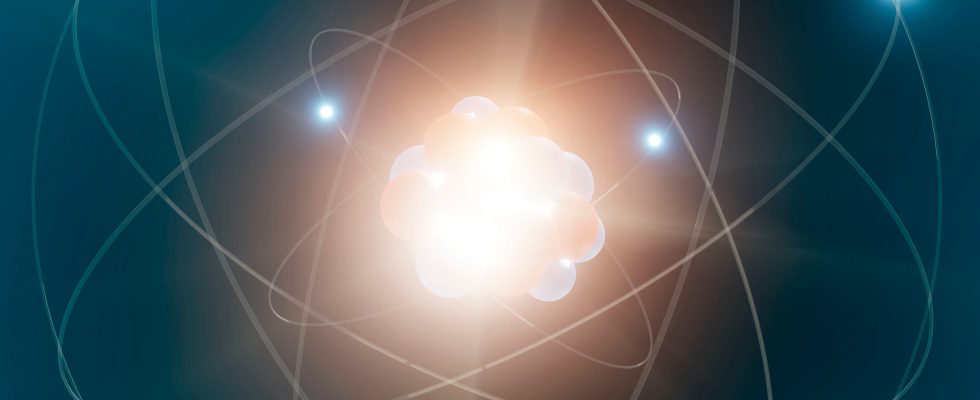The questions raised by the end of life and old age occupy minds. For us mortal humans, they are obviously related to each other. But this correlation is not universal. There are indeed beings in nature that die without ever having aged: these are the nuclei of radioactive atoms.
Small reminder: every atomic nucleus is made up of protons and neutrons (except that of hydrogen, which is reduced to a proton). If, in a given nucleus, the number of protons and neutrons is such that the nuclear force (which sticks them together) and the electric force (which causes the protons to repel each other) compensate each other, then this nucleus is stable, in the sense of immortal. Otherwise, the nucleus is “radioactive”: it will end up “transmuting”, that is to say changing its nature. Depending on the case, it will do this either by transforming one of its neutrons into a proton while at the same time emitting an electron (called “beta” radioactivity), or by emitting a helium nucleus made up of two protons and two neutrons (so-called “alpha” radioactivity).
Such transmutations occur spontaneously, that is to say without external cause. But “spontaneously” does not mean “immediately”. The transmutations within a piece of radioactive material unfold over a characteristic duration called the “radioactive period”. The choice of this term does not seem very fortunate, because I happened to come across people who had deduced that radioactivity would be a periodic phenomenon over time, such as leaf fall or the provisional third. However, this is by no means the case. There is nothing cyclical about radioactivity: a radioactive atom only transmutes once, and when it is done, it is done for good.
But then, what does the “period” represent? Consider a very large population of radioactive atoms, all identical: its period is equal to the duration after which half of the atoms present at the start will have been transmuted; At the end of a second period, the remaining population – the radioactive atoms which have not yet decayed – is halved again and is therefore worth a quarter of the initial population. And so on. This gives rise to a continuous decline. When the elapsed time has reached a large number of times the period, almost all of the atoms initially present will have been transmuted.
A probability of dying independent of one’s age
What is remarkable about this matter is that the half-life of a given radioactive atom is absolutely independent of its chemical or physical environment. You can heat it with a blowtorch, shake it like a plum tree, dip it in soda or acid, strip it of its electrons, its period will not be modified in any way. In other words, it is an intrinsic property of the nucleus, independent of anything that can happen around it, particularly within its electronic procession. The adventures of his existence have no impact on him.
If radioactive atoms die, like us, they do so at a rate that has nothing to do with that of our mortality curves. We humans are born, we grow, we age, and then we finally die. The passage of time matures us, then wears us out, and finally kills us, all the more easily the older we are. This is how the majority of us succumb between the ages of 60 and 90. Aging, in this sense, is not the same thing as simply getting older: it is seeing one’s probability of dying in the coming year increase as one’s age increases.
Radioactive atoms, for their part, have a probability of disappearing during a given time interval which is strictly independent of their age: a radioactive atom that appeared three thousand years ago and another identical one that appeared five minutes ago have exactly the same probability of disintegrating within the next hour. Their age therefore has no bearing on the matter… In this sense, they die without ever having aged. Their disappearance cannot therefore be interpreted as the result of any wear and tear. In them, nothing deteriorates with time, but it dies at any age. In a certain way, these atoms are indefatigable, as the atomists of Antiquity thought: they die exactly in the state they were in at the time of their birth.
Etienne Klein is a physicist, research director at the CEA and philosopher of science
.
